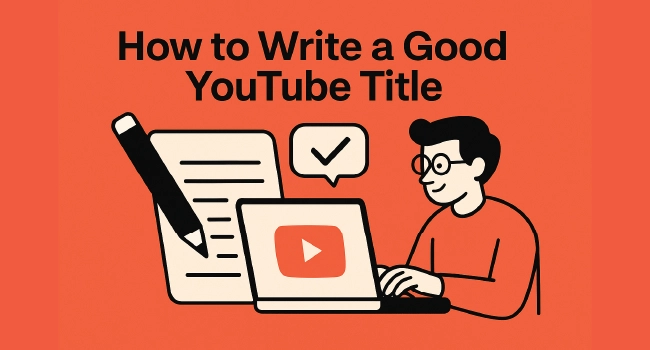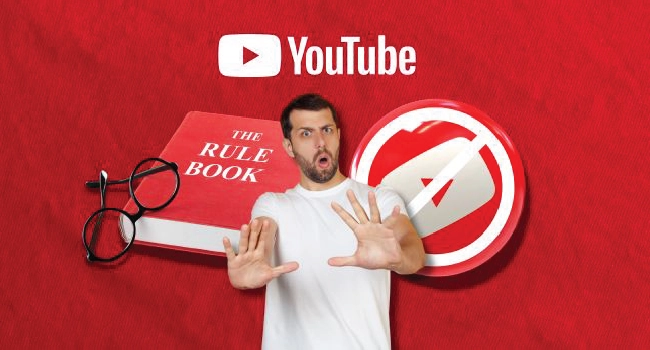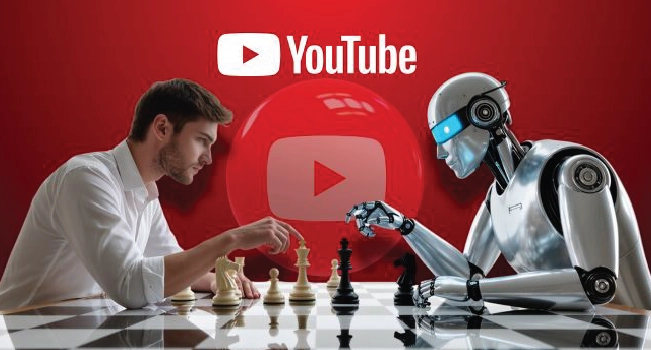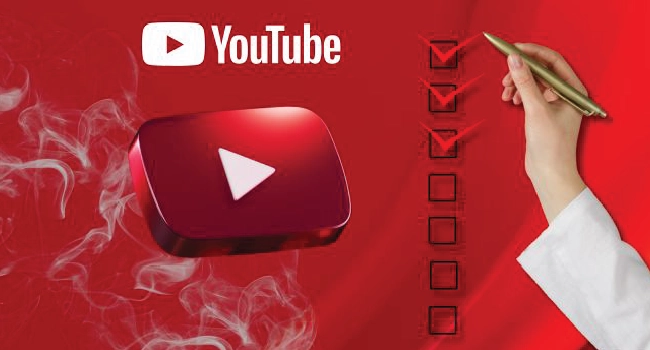How to write a good YouTube title is one of the first things you need to master if you want people to actually click on your videos.
A title is the very first promise you make to viewers. It tells them what your video is about, why it matters, and why they should spend their time watching it.

Think about it: when you scroll through YouTube, the titles that stand out are usually clear, short, and give you a reason to tap.
In this guide, I’ll show you how to write titles that balance two things: helping people find your content and making them want to click it. We’ll break down the rules, explore proven strategies, and share practical examples you can use right away.
Why YouTube Titles Matter for Growth
A title is one of the most powerful growth tools on YouTube. It plays a big role in how people discover your videos and how the platform decides to recommend them. When viewers see your video in search results or their feed, the title is often the first thing that catches their attention.
Additionally, titles influence your click-through rate (CTR). A clear and engaging title draws more clicks. Once people click, the video must deliver on the promise in the title. When it does, watch time goes up, and YouTube rewards that by recommending your content more often.
Here’s why titles matter so much:
-
They create strong first impressions in search results, suggested feeds, and on mobile.
-
They drive CTR, a key metric in YouTube’s discovery system.
-
They improve watch time by setting the right expectations for viewers.
-
They build trust, since accurate titles encourage viewers to return for more.
The Rules and Limits You Must Know

Before you get creative, you need to understand the rules that guide every YouTube title. These rules shape how your video performs and how YouTube treats your content.
-
Character limit: YouTube allows up to 100 characters for a title. Anything longer won't be accepted.
-
Length for visibility: While you can use all 100, most titles are cut off after about 60–70 characters on desktop and even earlier on mobile. Place your most important words at the start.
-
Front-load keywords: Put the main subject of your video first. This helps both viewers and YouTube's search system understand the focus right away.
-
Avoid misleading words: Titles that overpromise or trick viewers can hurt your channel. YouTube flags misleading metadata as spam and may limit your reach or remove videos.
-
Styling tips: Avoid using all caps, random symbols, or too many emojis. They may catch the eye once, but they usually lower trust.
-
Localization: You can also add translated titles so people around the world can find your content in their own language.
For an extra layer of detail, you can check out YouTube’s own title guidelines. :
When you stick to these basics, your titles become easier to read, more search-friendly, and safer for long-term growth.
How to Write a Good YouTube Title That Gets Clicks
Now that you know the rules, let’s talk about making titles that people actually want to click. The goal is to balance two things: helping people find your video and making them curious enough to watch it.
Here’s a simple framework you can follow:
-
1. Identify search intent
Ask yourself: what problem does your video solve, or what question does it answer? Build your title around that core idea. -
2. Lead with the main keyword or entity
Put the most important word or phrase at the very start. This makes it easier for viewers and YouTube's system to understand your topic instantly. -
3. Add benefit, curiosity, or payoff
Give people a reason to click. For example, instead of "YouTube SEO Tips," write "YouTube SEO Tips to Double Views." The second title shows the benefit. -
4. Keep it short and clear
Use direct, everyday language. Long or complicated titles are harder to read, especially on mobile screens. -
5. Align with your thumbnail
Your title and thumbnail should work as a pair. The title sets the context, and the thumbnail adds visual impact. Don't repeat the same words; let them complement each other.
For example, a cooking channel could use:
-
Title: “Quick Pasta Recipe Ready in 10 Minutes”
-
Thumbnail: A bright photo of the dish with text “10-Minute Pasta.”
This way, the viewer gets clarity from the title and excitement from the image.
Advanced Strategies for Writing Strong YouTube Titles

Once you’ve mastered the basics, you can take your titles to the next level. These strategies help you stand out, connect with your audience, and improve long-term performance.
Researching the Best Title Ideas in YouTube Studio
YouTube Studio has a Research tab that shows trending searches and content gaps. If you see a lot of people searching for something but not finding enough videos, that's your chance to step in. Combine these insights with competitor scanning: look at top-performing videos in your niche, study their titles, and notice patterns. Then add your own twist to create something fresh.
Frameworks for Different Content Types
Different videos need different title approaches:
-
How-to/tutorials: Start with "How to…" or use action verbs like "Learn" or "Build."
-
Reviews/unboxings: Include the product name first, then add a reaction word like "Worth It?" or "Hands-On."
-
Entertainment/storytime: Lead with curiosity. For example: "I Tried Living Like a Minimalist for 30 Days."
-
News/trending topics: Keep it short and urgent. Include dates or breaking words if relevant.
-
YouTube Shorts: Titles are less visible, so make them extra concise and curiosity-driven.
By the way, if you're also curious about how to write a YouTube description, we'll cover that in a separate guide.
Optimizing Titles Without Misleading Viewers
Strong titles grab attention, but they must stay honest. Misleading or clickbait titles may boost clicks at first but hurt watch time and trust later. To keep your titles on track:
-
Match the promise of the title to the video's content.
-
Avoid exaggerated claims you can't prove.
-
Use curiosity, but give enough detail so viewers know what to expect.
Testing and Improving Your Titles
Even the best titles sometimes need a second try. You can update titles after publishing, and YouTube often rewards improvements.
Watch your CTR and average view duration. If CTR is low but retention is strong, make the title clearer. If CTR is high but retention drops, tone down the hype.
You can also run small tests. Tools like TubeBuddy let you A/B test metadata, while YouTube's own "Test & Compare" helps with thumbnails. Together, they show you what combination works best.
If you've tried these strategies and still feel like your growth is slow, you don't have to wait around.
An extra push from buying YouTube subscribers can give your channel the momentum it needs. We only use real accounts, so the growth looks natural and builds long-term trust.
With more subscribers on board, your videos appear more credible, attract new viewers faster, and keep your channel moving forward while you continue refining your titles and content.
Translating and Localizing Titles for Global Reach
If your audience spans different countries, translated titles can make a big difference. YouTube lets you add alternate titles in other languages inside Studio.
Start with your top audience locations. If many viewers come from Spain, add a Spanish title. This makes your content easier to discover and helps you connect with more people worldwide.
Common Mistakes and Myths to Avoid
Even with the best intentions, it’s easy to fall into habits that hurt your video performance. Let’s clear up some common mistakes and myths so you don’t waste time or miss out on growth.
-
"Titles must be 60 characters."
There's no magic number. YouTube allows up to 100 characters, and the goal is clarity. Aim to keep key words up front and avoid getting cut off on mobile. -
"Clickbait always works."
Misleading titles might get clicks at first, but they often drive viewers away quickly. When that happens, YouTube stops recommending your content. Honest curiosity beats empty hype every time. -
"Changing a title hurts performance."
Updating a weak title can actually boost results. Many creators refresh old videos with new titles and see higher click-through rates. Just make sure each change is tracked so you know what works. -
Using all caps and symbols.
Titles filled with random emojis, symbols, or ALL CAPS feel spammy. They may grab attention once, but they rarely build trust or long-term engagement.
Avoiding these pitfalls saves you from frustration and helps your titles work the way they should, bringing in viewers who stick around.
Action Checklist: Writing Better Titles Every Time

Now that you’ve seen the strategies, here’s a quick checklist you can follow before publishing your next video. Keep it handy, you’ll save time and create stronger titles with less guesswork.
Step 1: Research
Open YouTube Studio and head to the Research tab. Look for trending searches or content gaps in your niche that viewers are actively searching for.
Step 2: Draft
Write five to ten title ideas. Place the most important keyword at the start, then add a benefit, payoff, or curiosity hook that makes the title stand out.
Step 3: Pair
Match your chosen title with a thumbnail that complements it. Avoid repeating the same words in both, the title provides context, while the thumbnail delivers the visual punch.
Step 4: Publish
Pick the cleanest, clearest option from your drafts and publish it. Try to keep it under 70 characters so it doesn't get cut off on desktop or mobile.
Step 5: Measure
Check your analytics in YouTube Studio. Track CTR, watch time, and retention. If CTR is low, test a clearer promise. If retention drops, reduce the hype and make sure the video matches the promise.
Step 6: Refine
Update titles that underperform. Translate them for international reach if you have global viewers. Keep testing and adjusting until you find what works best for your channel.
Conclusion
Learning how to write a good YouTube title is one of the simplest but most powerful ways to grow your channel. A strong title helps people discover your content, sparks curiosity, and sets the right expectations so they keep watching.
The rules are clear: keep titles short, front-load the important words, and stay honest with your promises. Beyond that, the strategies you’ve learned, like researching in YouTube Studio, tailoring titles for different content types, testing improvements, and even localizing for global viewers, give you the tools to stand out.
The best part is that you don’t need to get everything perfect on the first try. Titles can evolve. With every tweak, you’ll learn more about what makes your audience click and stay engaged.
Now it’s your turn: start applying these steps to your next video and watch how the right title can change your results.
FAQs | Frequently Asked Questions |
How often should I change my YouTube titles?
You don’t need to change titles too often, but refreshing old videos with stronger titles can boost performance. Test one change at a time and give it at least a week before reviewing results.
Should I use numbers in my titles?
Yes, numbers often make titles stand out. Lists, dates, or specific results (“5 Tips,” “10X Growth”) give viewers a clear idea of what to expect.
Do punctuation marks make titles more clickable?
Simple punctuation like colons, dashes, or question marks can improve readability. Avoid cluttered symbols or overuse, since that can look spammy.
Is it better to include my channel name in the title?
Only add your channel name if it’s already well-known or part of a series. For most creators, the space is better used for keywords and hooks.
